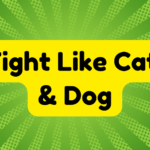The term "dog and pony show" describes flashy presentations that often prioritize spectacle over substance. Originating in late 19th century America, it initially referred to performances featuring trained animals. Over the years, it evolved into a critique of the superficiality often found in business and marketing events. Such extravagant displays frequently lack genuine value and can alienate audiences seeking authenticity. As consumer demand for transparency grows, the phrase serves as a reminder to prioritize meaningful content over mere showmanship. Understanding these dynamics can provide valuable insights into today's communication challenges and expectations.
Synonyms
When considering the concept of a "dog and pony show," several synonyms emerge that capture its essence as an extravagant yet often superficial presentation. These alternative phrases reflect the tendency towards fancy presentations that prioritize style over substance, revealing significant insights into how value is communicated in various contexts. Remarkably, they include:
- Elaborate showcase
- Flashy performance
- Over-the-top exhibition
- Stylized display
Such terms emphasize a focus on superficial displays that captivate an audience without delivering meaningful content. This critical lens encourages a more discerning view of engagements, prompting both individuals and organizations to prioritize authenticity over mere spectacle. Ultimately, it's crucial to recognize the difference between genuine engagement and a mere facade that can often cloud intent and understanding.
Example of Sentences
Business communications often include examples that illustrate the concept of a "dog and pony show" in action. This expression often critiques the nature of corporate presentations and marketing strategies that focus on superficiality rather than substance. Here are some illustrative examples:
- The CEO minimized the budget for extravagant dog and pony shows, prioritizing genuine engagement.
- A recent corporate event resembled a dog and pony show, leading to concerns about authenticity.
- Marketing strategies should avoid the pitfalls of dog and pony presentations, emphasizing real value.
- Stakeholders questioned whether their funds would support another dog and pony show rather than innovative solutions.
In an era where depth is essential, overemphasizing flashy displays can distract from meaningful content, raising skepticism about the actual value delivered.
Origin
The phrase "dog and pony show" has its roots in American entertainment, specifically in the late 19th and early 20th centuries. Initially, it denoted performances involving trained dogs and ponies, commonly showcased in circuses and carnivals. Over time, this term evolved, embodying flashy presentations lacking substance, often found in modern marketing and political discourse.
| Show Origins | Entertainment History | Current Usage |
|---|---|---|
| Late 19th – Early 20th | Circus and Carnival Roots | Critique of Superficiality |
| Trained Animal Acts | Integration into Pop Culture | Business and Politics |
| Adoption in Advertising | Reflection of Social Narratives | Corporate Transparency |
This evolution illustrates an ongoing critique of insubstantial spectacles emerging from entertainment origins.
Collocations
Collocations related to the phrase "dog and pony show" often illustrate its usage in various contexts, particularly in business and political discourse. These collocations reveal a critical lens on practices that prioritize style over substance. Common phrases include:
- flashy presentations designed to impress.
- superficial marketing tactics that deceive.
- extravagant events lacking genuine value.
- empty promises overshadowed by spectacle.
Such expressions highlight the tendency towards ostentation, often overshadowing meaningful engagement or transparent communication. In a landscape increasingly marred by superficiality, recognizing these collocations encourages a discerning approach. Stakeholders should endeavor for authenticity rather than adopting a facade, lest they fall into the trap of ineffective dog and pony shows, ultimately undermining their credibility and innovation efforts amidst the noise of aggressive marketing.
How to Use in Everyday Language
Although often associated with elaborate marketing tactics, the phrase "dog and pony show" can be effectively integrated into everyday language to critique any presentation or event that prioritizes style over substance. In discussions about marketing strategies, using this term can highlight the superficiality of certain approaches, especially when intricate displays poorly represent the true value of a product or service. Similarly, in event planning, one might caution against creating a spectacle that overshadows genuine engagement or meaningful content. By labeling these flashy events as "dog and pony shows," you encourage critical thinking and accountability, reminding colleagues to focus on delivering substantial experiences rather than just impressive displays. Consequently, the phrase serves as a powerful reminder to prioritize authenticity.
Why Is It Still Relevant Today?
In a landscape where marketing strategies and presentations often prioritize visual allure over meaningful engagement, the phrase "dog and pony show" remains pertinent. Today, many companies still emphasize flashy presentations that fail to deliver substantive value. In an era where corporate transparency and marketing authenticity are demanded by consumers, such superficial displays can be counterproductive. Organizations risk alienating audiences who crave genuine connections and straightforward communication. The ongoing critique surrounding dog and pony shows exposes a fundamental dilemma: the tension between style and substance. As corporate landscapes evolve, embracing authentic engagement becomes vital. Therefore, the phrase serves as a constant reminder of the importance of delivering significant content, rather than merely dazzling stakeholders with extravagant but hollow spectacles.







